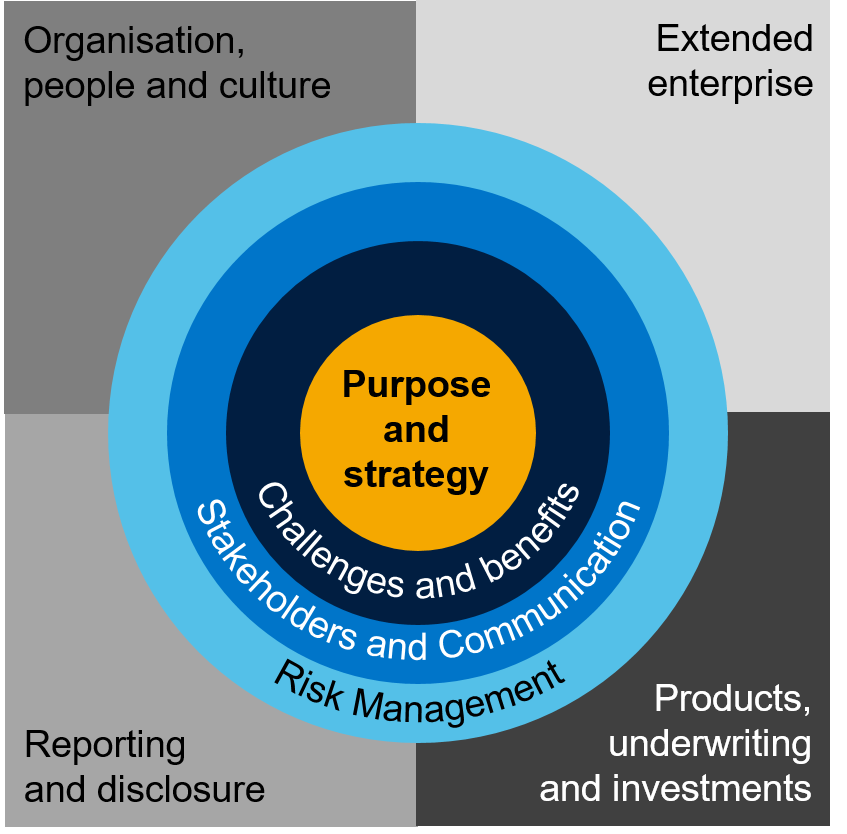 How can organisations implement ESG with purpose and strategy while maximising the benefits it could provide? Justin Elks, Managing Director, Crowe, explores the key challenges and key opportunities ahead of businesses taking this step.
How can organisations implement ESG with purpose and strategy while maximising the benefits it could provide? Justin Elks, Managing Director, Crowe, explores the key challenges and key opportunities ahead of businesses taking this step.
The increasing priority of ESG
ESG (Environmental, Social & Governance) is now the generally accepted term to describe sustainable, ethical and responsible investments, activities and practices. Each aspect of ESG covers a broad range of elements, each of which themselves contain significant degrees of complexity.
Over the last couple of years, there has been an upsurge of engagement with and action on ESG considerations. For example, with climate change, in an increasing corporate focus on social good and growing pressure for and recognition of the benefits of a diverse and inclusive leadership and workforce.
The link with purpose and strategy
ESG considerations are an important part of how businesses can support their employees, customers and broader society. To make a difference, approaches must be sincere and authentic, and initiatives linked together and integrated into the business. To capture the opportunities, as well as manage the risks in ESG, it is imperative to explicitly link activity to an organisation’s purpose and strategy. Once this link has been established, organisations should articulate the ambition for integration of ESG matters into their decision making and operational processes.
A key part of this is about identifying where a company is going to focus its effort. Those companies that have been most successful in embedding ESG areas that support their strategy, that fit with their organisational values, that they care about and where they can make a difference.
To set this ambition so that it is achievable and realistic, a number of challenges need to be overcome.
- Inconsistent understanding of ESG across the organisation: this requires training and engagement activity, to help to bring together potentially diverse or misaligned views.
- The wide range of stakeholders who need to be engaged, with different concerns: including the Board, senior management, customers, employees, shareholders, third-party suppliers and regulators.
- Balancing the short and the long-term: ensuring that the ambition balances the need for a coherent and achievable business plan over the near-term, while addressing the longer-term impacts of, for example, climate change and shifts in societal needs and preferences.
- Ensuring a joined-up approach across the individual elements of ESG, and across the organisation: overcoming this issue is not trivial, and requires strong change management activity to ensure that ESG principles become embedded, and that the agreed ambition is achieved.
- Integrating ESG into the ERM framework: communicating how risk management activities support the successful delivery of the ESG ambition; to avoid a siloed, separate framework.
To help address these challenges, it is helpful to have a consistent way of communicating ESG to all stakeholders. Crowe’s ESG framework, described at its highest level, provides an example of the key areas of consideration and highlights the need for an integrated approach.

Capturing the benefits
It can also be a challenge for individual firms to quantify the benefits of ESG related activity, to help support and justify the investment of resources. These benefits can be difficult to measure in numerical terms, because many of the outcomes either don’t have a direct financial impact, or because the benefits may be delivered over a longer-term time horizon than the typical business planning period.
The main areas of benefit include:
- developing and maintaining a strong, trusted brand and reputation; both in absolute terms and relative to peers
- attracting and motivating talent; increasingly, current and potential employees are expecting their employers to have a strong ESG-related purpose and strategy that fits with their values
- greater productivity, reduced costs, improved resilience and reduced regulatory intervention
- opportunities for growth and innovation; for example, through new or tailored products and an improved competitive position
- optimised investments and better access to capital.
Although they may be difficult to measure, studies now consistently show that a clear and coherent approach to ESG, and climate change in particular, can help companies be successful over the long term.
Leading practice
So, what do we see leading financial services companies doing to ensure that the full range of benefits of ESG are delivered?
- Linking their ESG path to their organisation’s purpose and strategy.
- Keeping their activities practical, with a clear destination in mind. The best firms focus on those areas that their firm can realistically change and influence, particularly in relation to the E and S components of ESG.
- Understanding and addressing regulatory expectations, but driving their ESG programmes from a business perspective in the knowledge of the regulatory constraints.
- Thinking about what they have learned from COVID-19, in terms of operational resilience, a greater sense of social good and the need for new products and services.
- Ensuring their approach to ESG is integrated, both across its components and across their organisation, so that the approach is consistently applied.
- Involving their external third parties too, so expectations are understood and met. This can help to ensure that stakeholders don't see the activities of partners as being in conflict with your ESG approach and messages.
- Continuing to focus on regular communications and cultural challenges; these are often the hardest part to get right.
- Tracking progress and the delivery of the benefits. Share successes, and be honest where performance has fallen short.
Conclusion
Linking ESG to your organisation’s purpose and strategy helps set a realistic, achievable ambition. Combining this with a structured approach to deliver that ambition helps to deal with the various challenges that ESG represents and maximises the benefits that can be realised.
